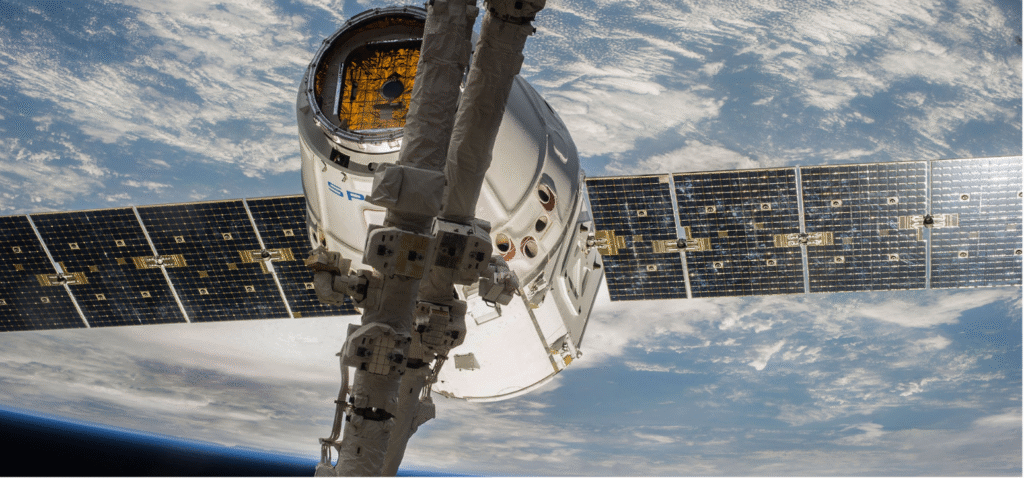

Simona Lipstaite
Public Affairs


On 10 March, the European Commission published the Communication on the European Union Space Strategy for Security and Defence.
Amidst the current geopolitical context of ‘increasing power competition and intensification of threats to the EU’ ’ the EU Security Union Strategy ‘recognises space infrastructure as essential services’ which require protection against current and anticipated threats.
Proposing a new EU Space Law: By harmonising various national rules across the EU which regulate space operations, the Commission aims to enhance the resilience of space systems and services in the EU. The regulatory proposal will be compatible with the NIS 2 and CER Directives, signalling a strong focus on cybersecurity.
Strengthening resilience of space infrastructure and ensuring security of supply: The European Defence Agency will coordinate with the European Space Agency to synchronise activities on critical space technologies, including assessing the need to establish new industrial alliances for relevant space and defence technologies. The Commission will also carefully screen foreign direct investment transactions in the space sector.
The Strategy too focuses on autonomous access to space by stimulating the development of launch systems, including micro and reusable launchers, and support the development of in-orbit transportation solutions.
Responding to space threats: by enhancing space domain awareness and creating an information exchange network under the EU Space Law.
Enhancing the Use of Space for Security and Defence: Further developing dual-use services provided by EU space programmes and commercial entities. Moreover, synergies will be encouraged under the EDF to research, develop and accelerate the deployment of payloads enabling services for defence. This will include:
Partnering for Responsible Behaviours in Outer Space: Promote norms rules and principles for responsible behaviours in outer space, aligned with the UN Outer Space Treaty and principles.
The EU will work close with the US to expand its partnership based on mutual interest and keep transparent and open communication between different actors in on space security, notably NATO and other third countries.
The Space Threat Landscape: Including the new Single Intelligence Analysis Capability (SIAC), to increase the strategic understanding counterspace and threats.
Especially relevant is the expanded capture of space systems under NIS 2 and CER Directives, increasing the workload of EU security organisations. New regulatory requirements on cybersecurity and resilience may overburden national agencies and industry players who have just started adjusting to the very recent adoptions of NIS 2 and CER Directives, not to forget the burden on start-ups and SMEs (so-called New Space), even with the considered support measures (not outlined in the Communication).
The Commission also wants to ‘increase resilience of space infrastructure and ensure security of supply by reducing strategic dependencies on third countries and boosting the resilience of critical industrial value chains.’ Strategic autonomy features across recent EU policy and legislation and in the tech sector there is extensive work in analysing where the EU has strong capabilities and should further develop its own industry. Space is an inherently collaborative industry and while Europe is a space power, it very much relies on international support and companies with international manufacturing, R&D, and value chains. These synergies will have to be carefully explored.
Beyond the expanded inclusion of space to existing policies, the Communication also plans for a much closer collaboration between the space and defence domains under its remit, such as the development of dual-use components. This is a shift in the EU’s previous sentiment regarding defence and security. It is clear the EU wants to strengthen its position along with likeminded countries and organisations where it aims to significantly increase its weight in the global space ecosystem. Aerospace and defence companies’ initial reading of the strategy, question the EU’s ability to regulate space and concern also about overburdening national agencies, or overregulating with existing policy and legislation, which they have cautioned in the defence sector before. International companies are cautious to understand the benefit of closer collaboration while the EU wants more autonomy and capabilities such as R&D and manufacturing in Europe. Without certainty that companies want to invest in Europe, any synergies could backfire.
The Commission and EU High Representative will present the document to EU Member States with initial steps to implementing it, the keep reporting to Member States annually on progress and next steps.
Relevant companies will need to carefully read the document and ensure to develop positions and input especially regarding the proposed EU Space Law, so they can negotiate cohesively.
Access Partnership closely monitors tech and space, regulation and policy developments. For more information please contact: Lea Pavlovic [email protected], Ivan Suarez [email protected], Aleksander Lubojemski [email protected] and Simona Lipstaite [email protected]

